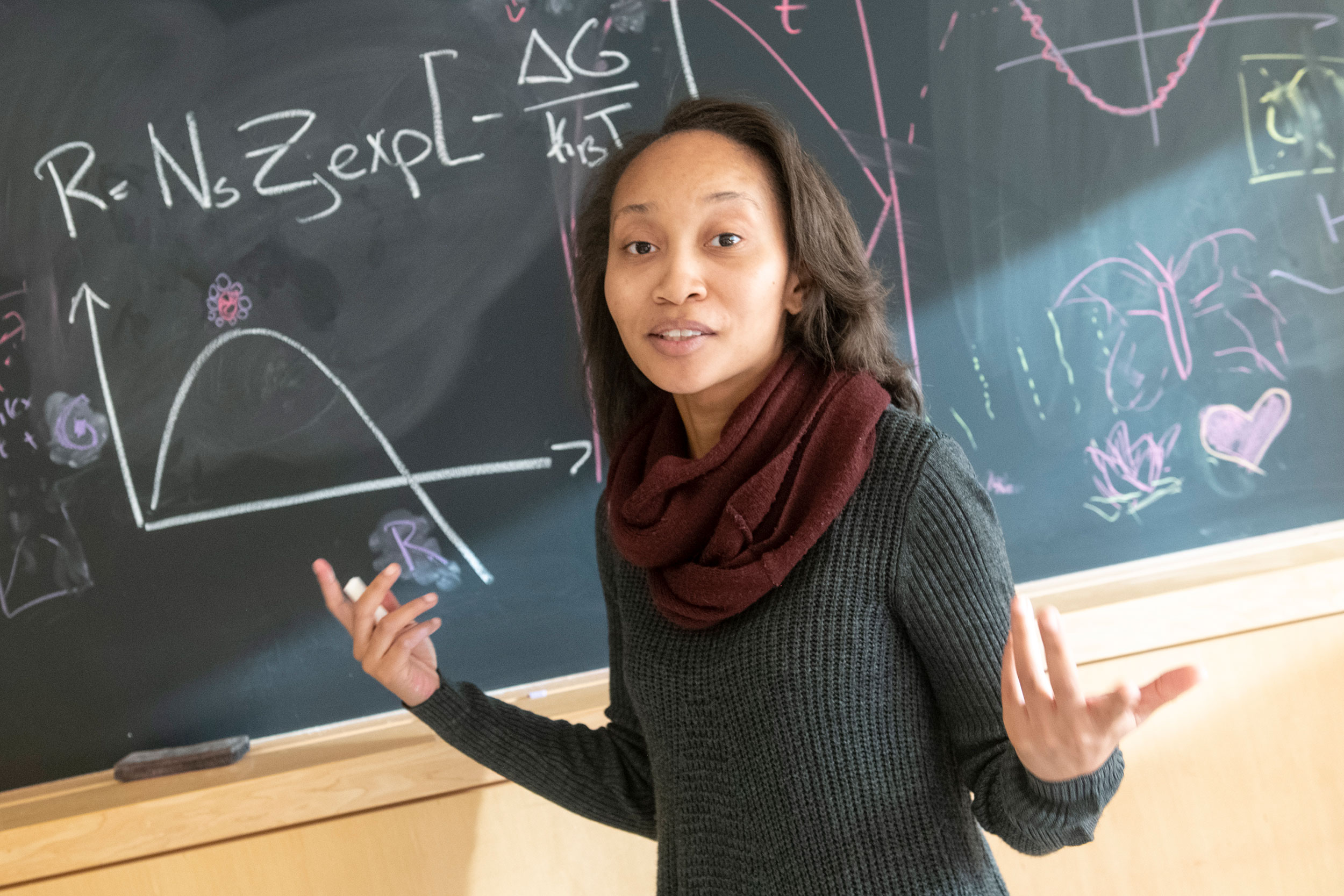
Ph.D. candidate LaNell Williams’ six years of research have opened the door for new ways of studying viruses.
Jon Chase/Harvard Staff Photographer
Road less traveled by
LaNell Williams building career as researcher, leader by going her own way, helping prospective grad students of color find theirs
This story is part of a series of graduate profiles ahead of Commencement ceremonies.
When LaNell Williams first arrived at Vinothan N. Manoharan’s lab, the team was focused on how a virus forms itself into the right structure. Williams, however, took a different approach, asking instead what it would take to get a virus to form incorrectly.
“What I’ve always have been impressed with by LaNell is that she takes her own direction, and it’s usually not the same direction that everybody else is going in,” said Manoharan, the Wagner Family Professor of Chemical Engineering and Professor of Physics. “That’s a trait that I think is important for anybody who’s going to be a researcher and a leader in their field. It’s only by seeing how things go wrong that we can understand how things go right. LaNell has a good sense for when you have to take a different direction from what everyone else is doing in order to make more progress.”
The enterprising young physicist, who will graduate from the Griffin Graduate School of Arts and Sciences with a Ph.D. in physics, focused her research on how viral proteins assemble around RNA and the different configurations a virus can explore when conditions are changed. “I wanted to know if we could cause the virus not only to assemble into its well-formed structure but also assemble into other structures that are malformed structures of the virus or even partial viruses,” she said.
“I thought that was an interesting question because if we could think about the ways in which virus assembly fails, in addition to the things that cause it to go correctly, we can pinpoint what actually matters in virus self-assembly,” added Williams, who got her bachelor’s at Wesleyan and her master’s at Fisk.
Her six years of research have opened the door for new ways of studying viruses. “LaNell is a leader. She has demonstrated that in the lab, where she blazed a new trail into understanding virus assembly, and outside the lab too. She has a tremendous amount of energy and initiative in organizing students, activities, and projects, and getting things off the ground and sustaining them,” Manoharan said. “She has been an inspiration to many of our students, both graduate and undergraduate.”
One thing she is particularly pleased about getting off the ground is the Women+ of Color Project, which aims to bring more women from underrepresented groups into STEM fields. (Williams is only the third Black woman ever to pursue a Ph.D. in physics at Harvard.)
The group is working to increase accessibility by providing workshops that encourage prospective graduate students and give them the tools to present themselves in the best light. The project also provides a platform for W+OC to share best practices on thriving in grad school, networking, and developing academic careers.
“A lot of underrepresented minority women don’t apply to places like Harvard, Stanford, and Yale,” she said. “The reason why that’s true is because the environments that we place ourselves in often discourage us from applying to those places in the first place, even if we’re highly qualified applicants. So, we select ourselves out because of the messages we’re receiving from people within our environment.”
Upon graduation, the native of Memphis, Tennessee, will join the fewer than 100 Black women in the U.S. who have earned doctorates in the field since 1973.
“It is something to be proud of. I don’t want to negate that, but I wish there were more. I wish there was more of a community so that we could have a collective voice,” she said. “I’ve never been one to want to be special. I’ve never been one to want to be the only one. I value having a community.”
Since 2019, the Women+ of Color Project has helped about 50 students apply to graduate school each year. This year, the project received a $100,000 Heising-Simons Foundation grant that Williams hopes to use to expand and perhaps establish a Harvard chapter.
“LaNell has really helped a whole generation of students see that, yes, Harvard really needs them, and that this is a place where they can make an impact,” Manoharan said. “The Women+ of Color Project was influential because it brought to us so many students who realized that they were interested in the research that was going on here.”
Williams will continue charting her own path as a postdoctoral fellow at the Center for the Physics of Biological Function at Princeton University. The independent postdoc will allow the emerging physicist to move into a slightly different field, where she’ll have the opportunity to collaborate with other scientists and study other biological functions and systems.




